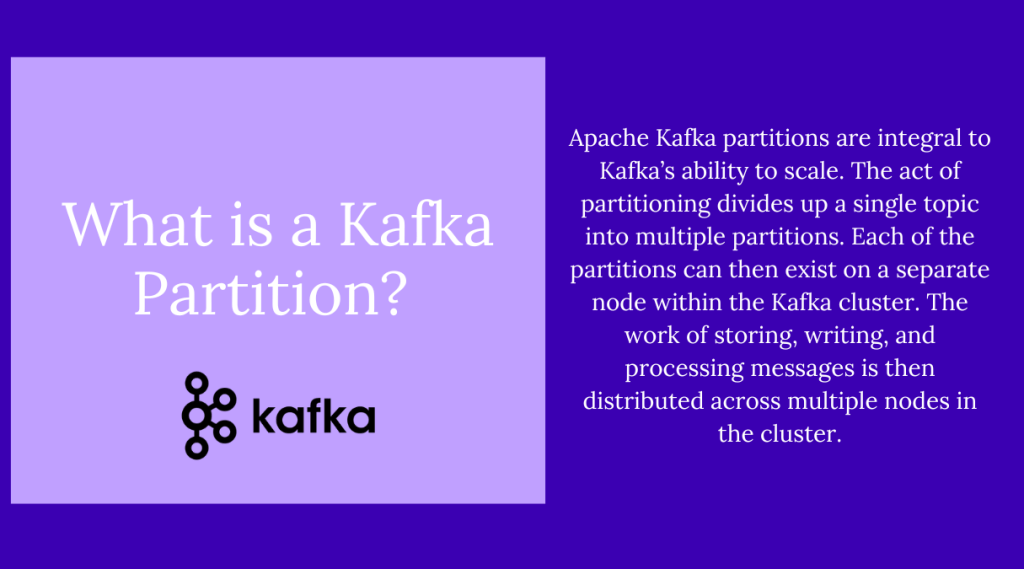Published May 2023
Apache Kafka partitions are integral to Kafka’s ability to scale. The act of partitioning divides up a single topic into multiple partitions. Each of the partitions can then exist on a separate node within the Kafka cluster. The work of storing, writing, and processing messages is then distributed across multiple nodes in the cluster.
Kafka Partitions and Parallelization
Kafka is a distributed system, running in a cluster. Each of the nodes in a Kafka cluster are referred to as brokers. The topics are partitioned and replicated across the brokers throughout the entirety of the implementation.
These partitions allow users to parallelize topics, meaning data for any topic can be divided over multiple brokers.
Since a topic can be split into partitions over multiple machines, multiple consumers can read a topic in parallel. This organization sets Kafka up for high message throughput.
Kafka Partitions and Offsets
Kafka needs a way to keep track of the many partitions within a topic. Kafka offsets are used as the tracking system for partitions.
Kafka automatically assigns the message ordering, and the sequence for these offsets does not change. Learn more about Kafka offset here.
Kafka Partitions and Topics
Kafka automatically creates topics by default. If you prefer, topics can also be created manually using kafka-topics.sh. Learn more about creating Kafka topics here.
Setting the Number of Kafka Partitions
We created a simple formula for determining how many partitions are needed based on your desired throughput. Read about setting the Kafka partition number.
Have Kafka Questions?
Managed Kafka on your environment with 24/ 7 support.
Consulting support to implement, troubleshoot,
and optimize Kafka.

